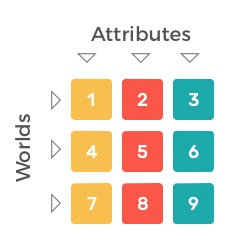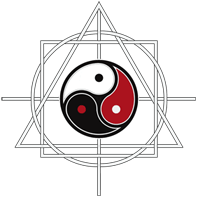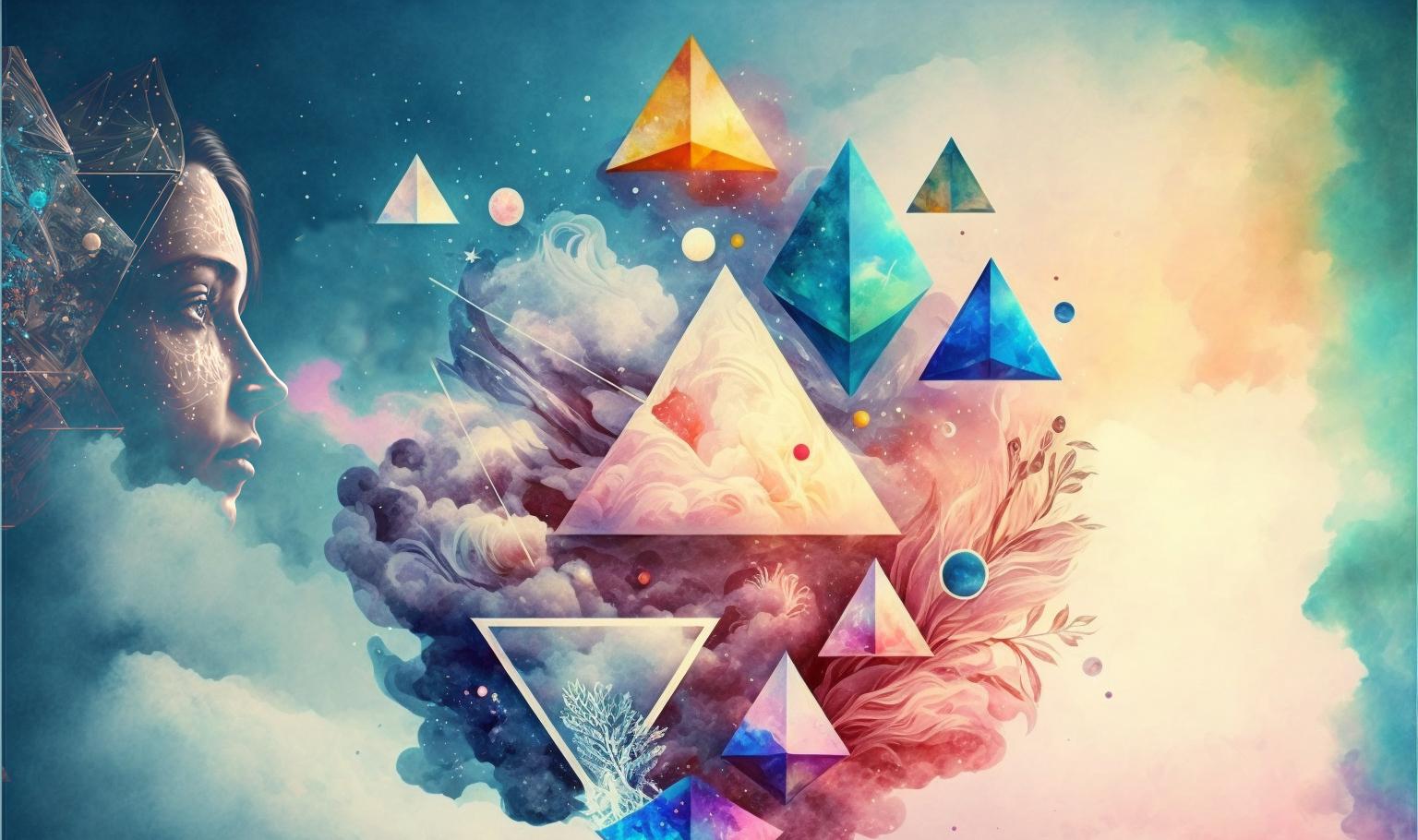
The First Personality Reading Based On
The Sacred Geometry Of Your Name Symbols.
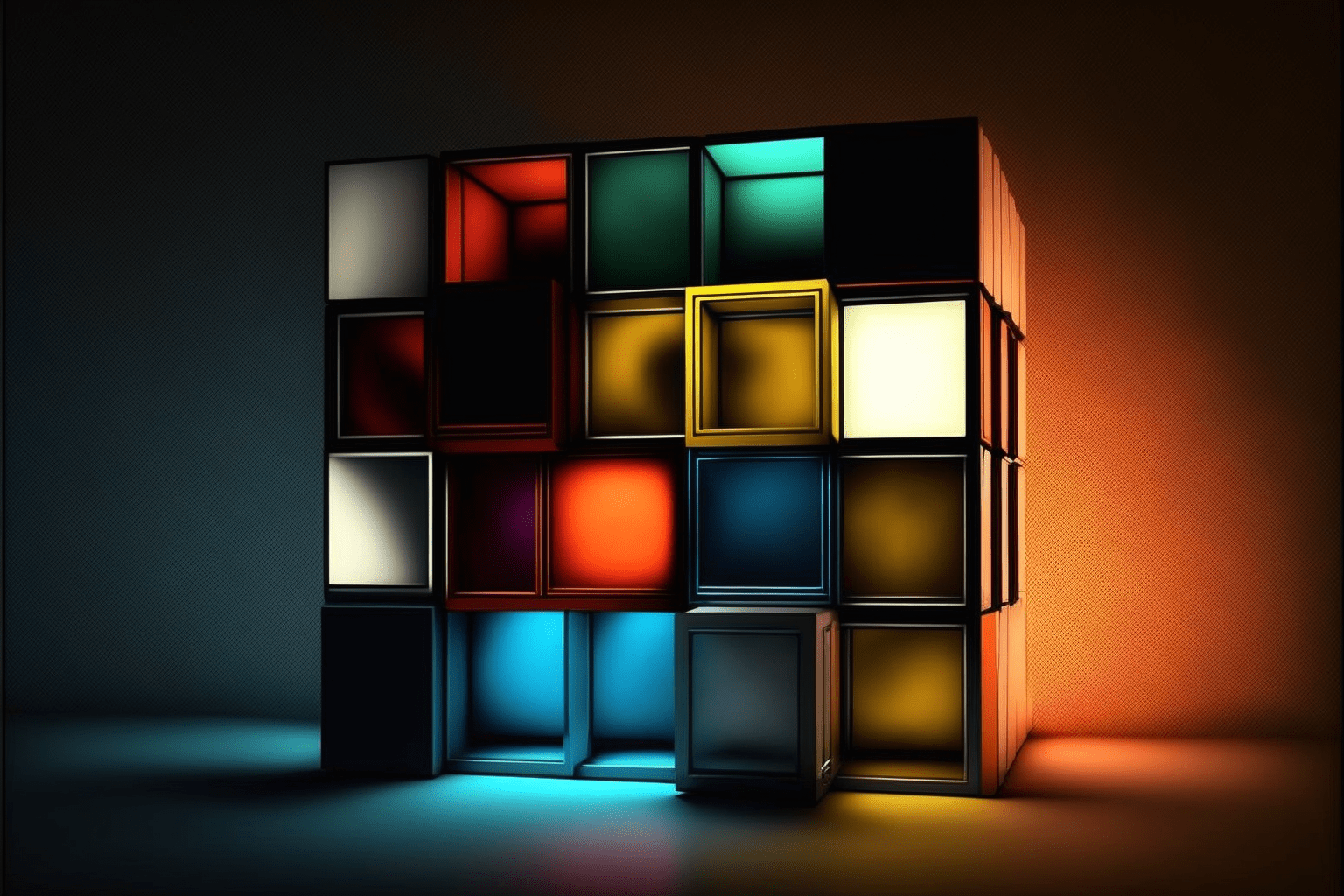

Every circle has a center (symbol 1).
By extending the radius, we obtain a first diameter (symbol 2).
There is an infinity of diameters, but only one has the particularity of being perpendicular to the first one (symbol 3).
By dividing the circle by its diameter (horizontal axis) and the perpendicular (vertical axis), we can see that they form 90° angles between them, thus forming the cross of universal tradition, long before it was taken up as a symbol by religion.

By connecting the points of the cross in contact with the circumference, we obtain a first square, called active (symbol 4).
By rotating the figure by 45°, we obtain the square, called passive (symbol 5).
This symbol of the circle divided into four equal parts evokes the cross moving around its axis. It is found in the division of time into four seasons or in the orientation of space in 4 cardinal points: north, south, east and west. It also represents the 4 Elements.
The polygons of the square family correspond to the space and the matter which occupies it:
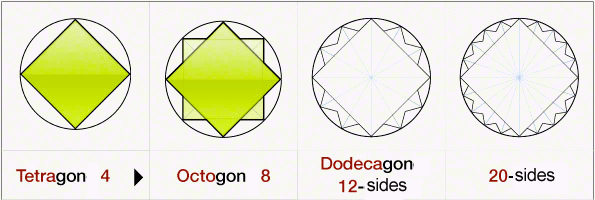
The square numbers are obtained by adding the odd numbers:
The pyramidal numbers are obtained by adding the square numbers:
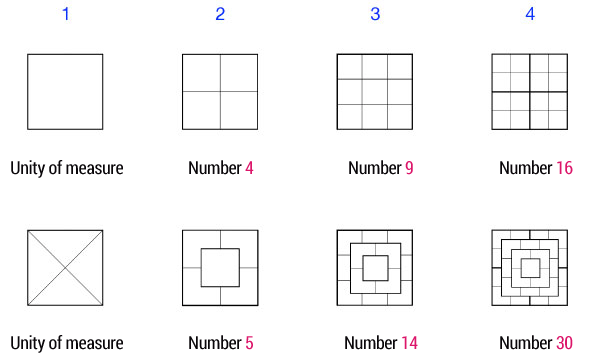
The Ancients defined the four elements in relation to the four states of matter: solid, liquid, gaseous, igneous.
All that is solid, they called earth; all that is liquid, water; all that is gaseous, air; and all that is igneous, i.e. heat, light, they called fire.
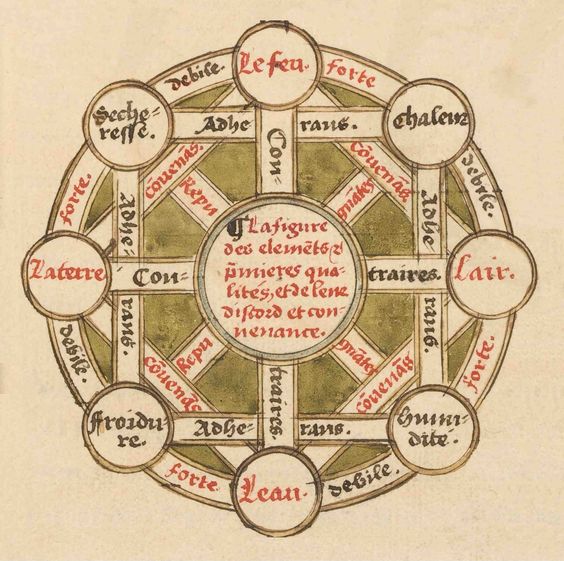
The cut stone evokes the Masonic symbol of the "cubic stone" associated with the idea of completion and perfection, i.e. the full realization of the possibilities contained in the rough stone.
The "cubic stone" is essentially a "foundation stone"; it is therefore very "earthy", as indicated by its shape and, moreover, the idea of "stability" expressed by this same shape.
Symbolically the cube is identical to the square, the 4 is the number of the matter of the four elements.
The cube represents everything that is solidly and durably established in matter. The compact shape of the cube makes it a symbol of stability, but also a figure of the limit, of confinement, of prison.
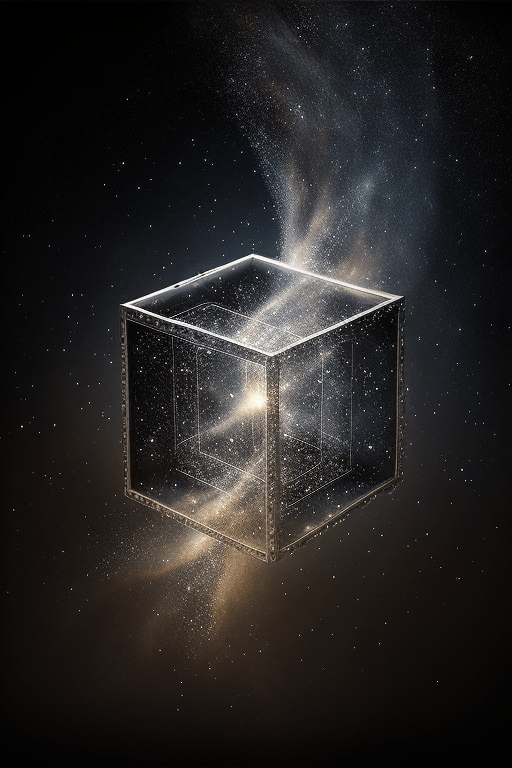
The squaring of the circle is as much a geometric problem as a spiritual exercise symbolizing the passage from the earthly (the square) to the celestial (the circle), from the imperfect to the perfect; in the Middle Ages, we see in the squaring of the circle a secret knowledge that would give access to the divine.
Going from square to circle is not only to associate the visible and the invisible, but it is to make the passage from the sensible to the divine transcendence.
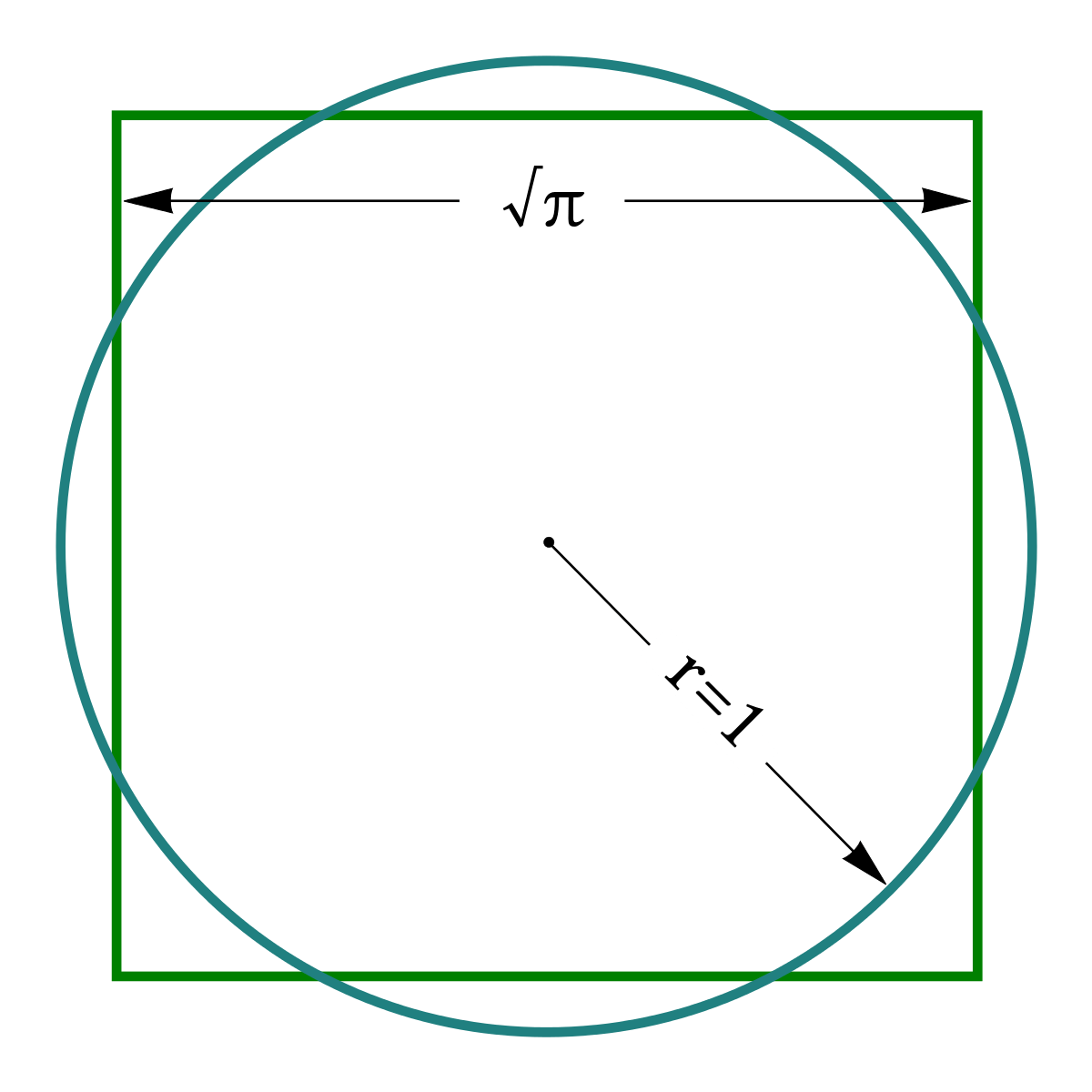
In the quadrature of the circle, the square represents the created world, matter, knowledge. The circle symbolizes the infinite, the celestial powers, Knowledge. The major problem of the squaring of the circle is thus to succeed in bringing matter to the level of the circle, to spiritualize it, this point of view corresponding to the alchemical approach which seeks to raise matter, thus the animal part of man, towards the divine. To realize the squaring of the circle is thus a difficult symbolic operation, which many civilizations have approached.
The Greek thinkers and physicians Hippocrates (c. 460/v. 370 B.C.) and Claudius Galen (131/201 A.D.) established the theory of elements that gave rise to the theory of moods.
This theory is based on the correspondence between the microcosm and the macrocosm, i.e. that the human body is a miniature reflection of the universe. Human physiology is thus controlled by the organic form of the constituent elements of the universe - fire, earth, air, water -, the quadruple root of the things that the four humours reflect.
Each mood is dominated by a couple of qualities: yellow bile (colera in Latin) is hot and dry like fire; black bile (colera nigra) is cold and dry like earth; phlegm (phlegma or phlegma) is cold and wet like water; blood (sanguis), which contains a bit of the other moods, is hot and wet like air.
Just as the universe is not healthy when the elements are out of balance, the human body becomes sick when there is an excess of any one of the other humours and associated emotions. Health and illness therefore depend on the balance of moods and their quality. In healthy people, the predominance of a mood is called complexion and determines temperament. To each predominant mood corresponds a temperament: bilious or angry for yellow bile, sanguine for blood, phlegmatic for phlegm and melancholic for black bile.
We are dependent on our emotions. When we keep our emotional reactions for hours or days in a row, they turn into moods. When a mood is maintained for weeks or months, it becomes a temperament. When a temperament is maintained for months or years, it becomes a personality trait. Our personality traits are created from our emotional dependencies.
Temperament is essentially linked to the vital side; it is a synthesis of all the instincts, tendencies and impulses that man can hardly correct or suppress because they have their roots in his biological and physiological nature. Temperament is similar to so rather to the animal side.

Hippocrates distinguished four kinds of temperaments: sanguine, bilious (or angry), nervous and lymphatic. But there are other classifications.
For traditional astrology, there are seven of them: solar, lunar, mercurial, Venusian, Martian, Jupiterian, Saturnian.
We can also distinguish three of them, depending on whether man is more instinctive (predominance of the biological side), more sentimental (predominance of the emotional side) or more intellectual (predominance of the mental side). This is the path pursued by geonumerology.
The Duplication of the Square in Plato’s Meno.
The problem: with a square, how can we build a new square whose area is twice the size of the original square?
The original square consists of four triangles. By shifting these areas outwards we obtain a new square is made up of eight triangles.The "test": by extending two of the lines, as shown on the right hand side of the diagram, we obtain five triangles; all with the same area.
The original square is made up of two of the triangles. The new square is made up of four of the triangles. The new square therefore has effectively twice the area of the original square.
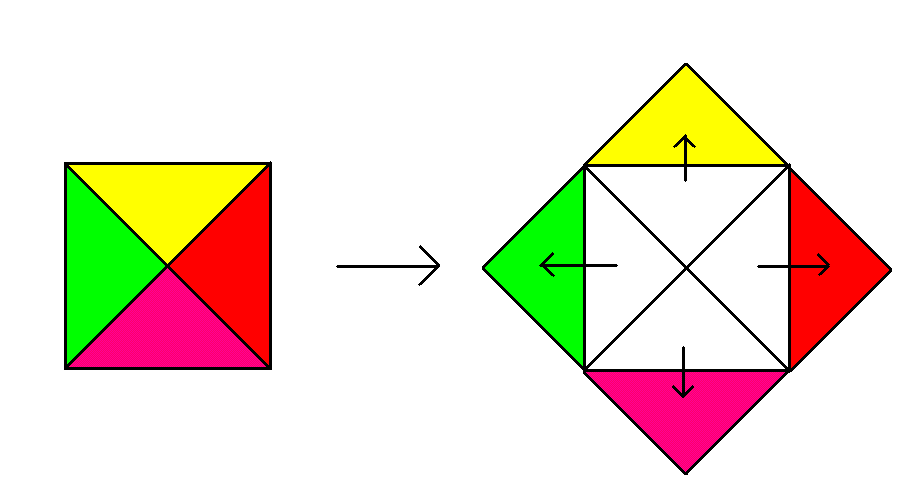
Doubling the Square
"Menon" is one of the founding texts of the philosophy of knowledge and also the dialogue where Plato treats the idea that learning is only remembering (Theory of Ideas and
Reminiscence Theory).
It is made by drawing two horizontal parallel lines, intersected at right angles by two other parallels.
The table is thus divided into nine parts arranged in three rows and three columns, which earned it the name "tripartite board".
We have nine square boxes whose outline, partially drawn, is complete only for the central box.
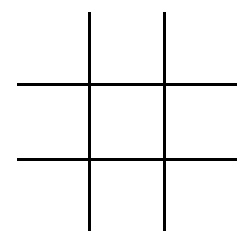
We have seen above that the numbers 1, 5 and 9 were each representative numbers of their World: 1 for the Divine World, 5 for the Human World and finally 9 for the Natural World.
Each of the worlds has a reflection in the other two.
It is a kind of Pythagorean table, where the elements of study play the role of numbers, and this was the true aspect of the Pythagorean table as used by the initiates.
So we have a table as follows :

The analogy will allow us to fill in the places that have remained empty and that represent the elements to be discovered - and this in a very simple way. All you have to do is to join in each empty square the two names of which this square is the intersection. (Pythagorean table process applied to ideas).
The theosophical reduction allowing to reduce all the numbers to the first nine is visualized with the help of 9 squares arranged in squares.
This arrangement, described as Cartesian, is preferred for the theosophical study of numbers.
With an abscissa axis (the rows) and an ordinate axis (the columns), it allows to assign to each number a very precise place (in reference to the system of Loci or memory of places) and easily memorizable within the archetypal matrix.
